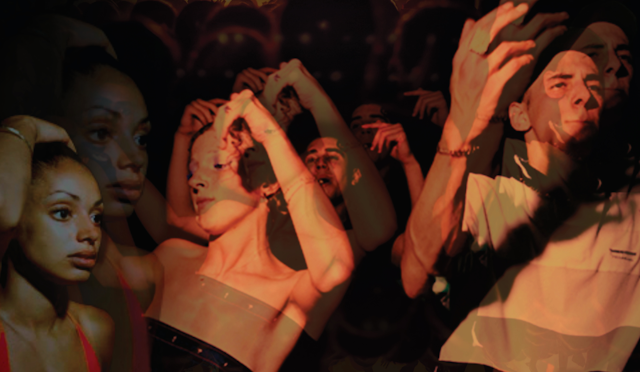A host of veterans from the heyday of the UK’s garage scene (including Heartless Crew, Dane Bowers and members of So Solid Crew) star in 25 Years of Garage, a new documentary co-directed by former promoter Terry Stone.
As an academic who specialises in Black music and advocates for its serious intellectual study, I find it encouraging to see active members of the garage scene documenting the culture.

UK garage was a genre of electronic dance music, which peaked between the late 1990s and early 2000s. Incorporating elements of R&B, jungle and pop, its sound was marked by pitch-shifted vocal samples and a distinctive percussive rhythm.
In 25 Years Of Garage, stars remember the garage scene that emerged in the early 1990s, tracing its expansion from small rooms in Ministry of Sound to its own branded club nights. The focus is largely on Stone’s former business, Garage Nation, which ran successful club nights and events in the UK and abroad.
A brief history of garage
This trip down memory lane highlights garage’s ideology of conspicuous consumption and “bling culture”.
There’s the champagne lifestyle – Moët as standard. The designer “garms” (clothing) which were colourful and flamboyant, especially for men (think Moschino, Versace, Iceberg Jeans). And the jet setting to Ayia Napa (always with budget airlines) for clubbing at infamous venues such as Pzazz and Insomnia, which at their peak attracted ravers from all over the UK.
Archive footage is included to showcase the “vibe” during the height of the scene, both home and away. These are dispersed with more recent recordings from a post-COVID restrictions event in south London.
Personal accounts recall the scene’s transition from fun, luxurious and carefree to dangerous and disorderly. In London, police intervention through 696 risk assessment forms (advanced notice of events which required organisers to share the names, stage names, private addresses, and phone numbers of all performers) decimated the scene.
Meanwhile in Ayia Napa, Cypriot locals resented the dominance of tourists and their disorderly behaviour in what was once a sleepy fishing village. Media coverage began labelling garage as dangerous, with incidents of shootings and stabbings reported both at home and away.
Sidelining the issues
Despite acknowledging negative press around guns, violence and killings in the garage scene, the racialised element of press attitudes is not explored in 25 Years of Garage. Garage is presented as a multicultural scene – and in many ways it was. However, reflection on the impact of racism and policing in criminalising the scene is lacking.
The way the documentary responds to racialised narratives of garage, race and violence, almost reinforces them through dog whistling (using words understood by a particular group of people) and the use of the racially coded words like “grime” and “yardie” to insinuate that perpetrators of violence were Black.
Throughout however, the documentary suggests that for promoters of various racial backgrounds “a gangster’s game” was needed, “a certain mentality and attitude” to be in and survive in this industry. For Stone himself, who is white, this included the need to wear protective vests from weaponry.
There’s also reference to the ever presence of cocaine presented in a matter of fact, deracialised way. The challenges around violence, crime and drugs were not the result of “grime” or “yardies”, but an issue for the scene as a whole.
Gendered issues also remain unaddressed. In 25 Years of Garage, women are a footnote. Very few are given the platform to share their stories, despite women being highly visible in both the historical and recent footage included in the documentary.

Women in the scene are referred to almost as mere entertainment in the lives of the men. This is despite featuring clips of MC Bushkin noting that girls left jungle and drum and bass scenes for garage and MC CKP stating wherever the girls were, the guys would follow.
The documentary positions women as passive and largely voiceless in the scene, which was not the case.
Women are essential in the survival of participatory music cultures such as garage (where everyone present at a music event is actively participating through playing an instrument, singing, chanting or dancing) in both visible (MCs, professional dancers, administrators) and invisible roles (fans).
This lack of reflection inadvertently erases women from the genre’s history.
Is there a future for the garage scene?
What caused garage’s decline? In 25 Years of Garage, DJ Majestic (once one of London’s most popular garage MCs) offers some insight.
He considers the then smaller role of the internet, which later did so much to cement the international success of grime. He also debates the limiting insistence of the UK element of “UK garage”, and the consequences of gatekeeping. Not “letting the youngsters through” meant that musicians including Dizzee Rascal and Wiley declared that they did not make, nor care about, garage when they built their own sound.

Associations with criminality and violence in the mainstream also decimated the scene’s chances of longevity. Its demise, meanwhile opened up a plethora of other genres such as bassline and dubstep.
Without an overarching narrative curating this documentary, it becomes an echo chamber. While it’s important to platform those essential to garage, all these personal accounts do is speak to other people from within the scene.
To push the genre forward, it needed to make the historical, sociological and cultural connections that would render garage accessible to outsiders.
In this way, 25 Years of Garage unintentionally demonstrates and reinforces the role gatekeeping – originally intended to protect the scene – eventually played in stifling it.

